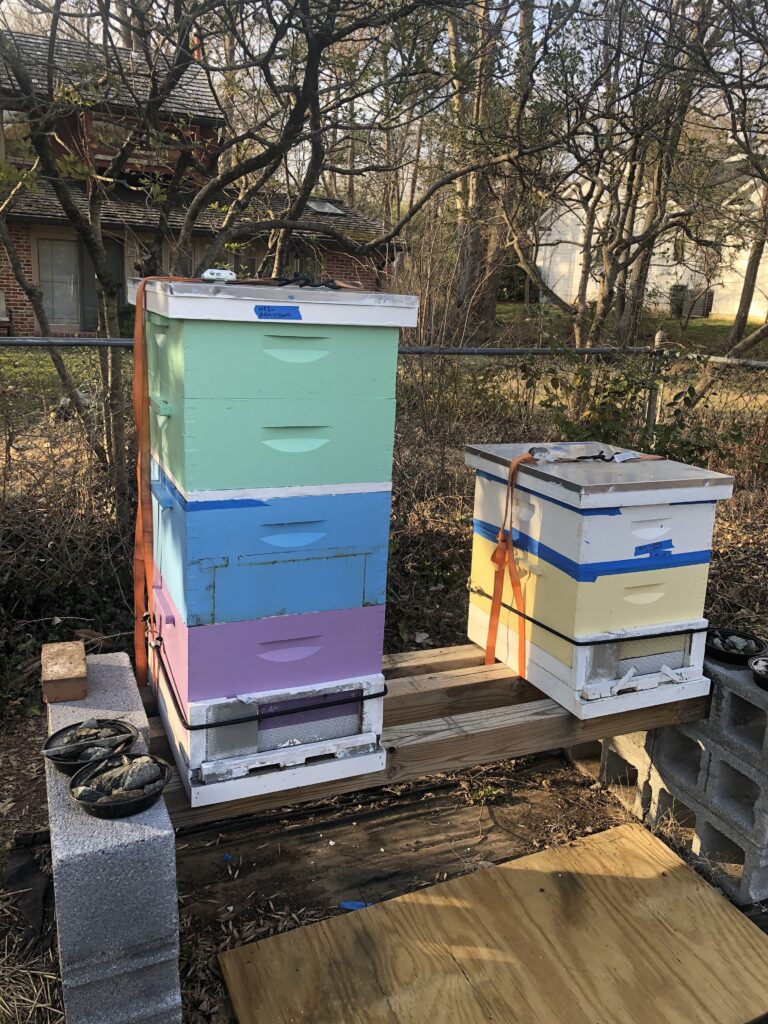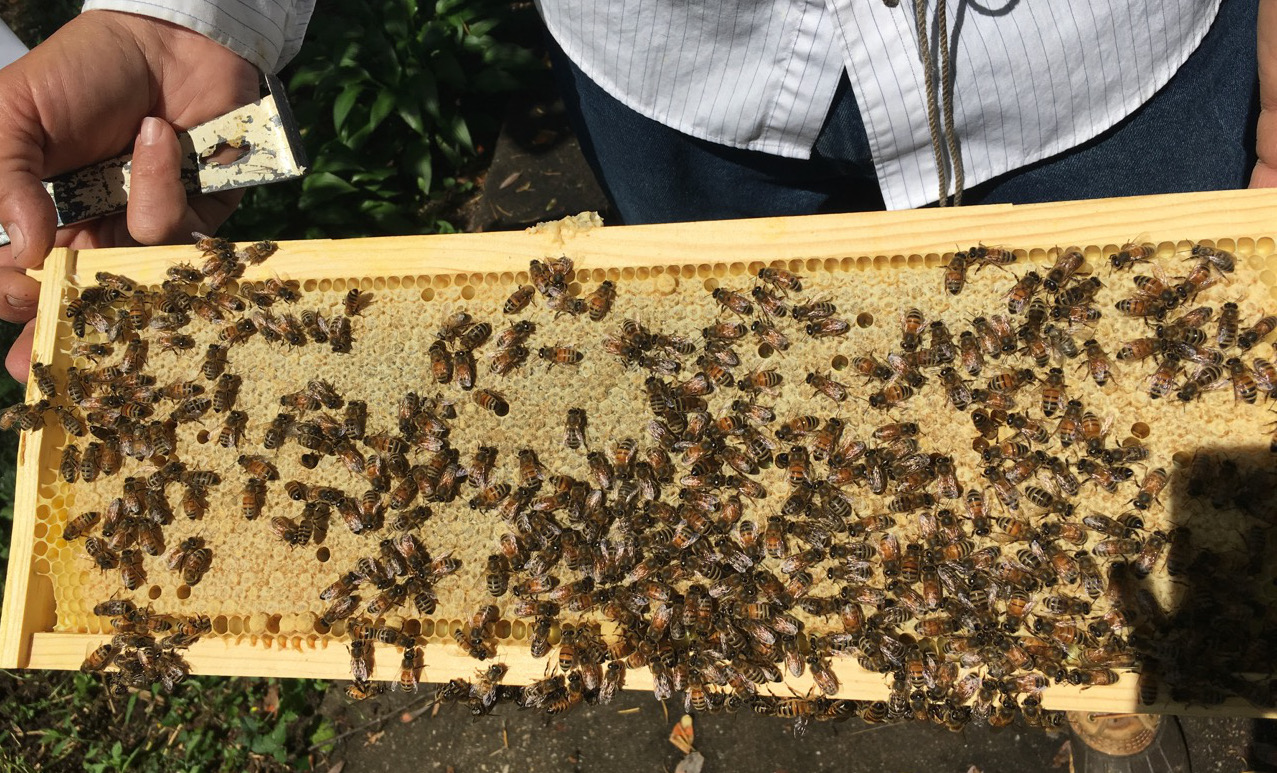Things are happening very fast.
Spring has sprung. Two weeks ago the nights were going into freezing temperatures and the bees were all clustered together trying to keep warm. Last week they are out foraging until dusk. This week they are having cold nights and the days are getting warmer. It is hard to work with this weather!
So far it looks like we have had a good winter. We took twelve hives into the winter, and it looks like we have ten that survived. That is 17% losses … not perfect, but much better than the Maryland average of 30% to 40%. This is a nice coincidence with the fact that we have decided that ten is the number of production hives that is sustainable with one beekeeper (who has other interests as well).

We have some spring honey that we will sell until it’s gone. Ordinarily, Maryland beekeepers will harvest honey in July, when the first nectar flow is over. Sometimes here is a second harvest in September/October if there has been a second nectar flow from fall foliage like goldenrod. Goldenrod makes a nice honey, when it’s available.
This is also the time of year when honey bee colonies, like many creatures, start to think about reproducing and propagating the species. Honey bees do this by swarming. A honey bee swarm is not something scary … bees in a swarm are as gentle as any insect can be. They are temporarily between homes, so they have nothing to defend but themselves and the queen. If you don’t try to squish them, they won’t sting you. Here are local resources to address swarming honey bees.
If you see a cluster of honey bees in Montgomery County (Maryland), go to the Montgomery County Beekeepers Association swarm identification page and follow the directions there. If you see a cluster of honey bees in the District of Columbia, go to the DC Beekeepers Alliance Swarm Squad page and contact them. In other locales, contact your local beekeeping club. If you can’t find it by googling, try your state beekeeping association which will list clubs near you. Please don’t contact us directly … we will be trying to prevent our bees from swarming.

Hi, Just want to clear goldenrod’s name.
Giant Ragweed is the main cause of fall allergies – not goldenrod. Golden rod has sticky pollen that must be distributed by pollinators (like bees!), giant ragweed has wind blown pollen, and as such caused sneezing.
Here’s some more information. https://blog.nwf.org/2014/09/the-goldenrod-allergy-myth/
Goldenrod is host to so many pollinators – In fact, goldenrods are considered “keystone plants,” species that have extreme importance to the wildlife. Goldenrods support dozens of butterfly and moth species by serving as their caterpillar host plants. Goldenrods also support dozens of native bee species that are pollen-specialists and can only feed their young the pollen of certain native plants.
So, don’t be hating on goldenrod! Your bees need it.
Thanks,
Sarah
Hi Sarah,
The “hate speech” against the goldenrod has been eradicated.